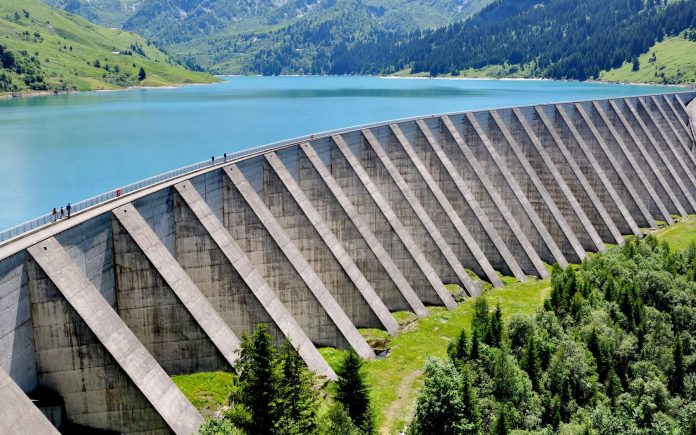After weeks of heavy rain, the Oued El Makhazine dam has finally reached full capacity—a major milestone for northern Morocco’s water reserves. For the people of the Tangier-Tetouan-Al Hoceima region, it’s not just good news—it’s a sign of much-needed relief in the face of the country’s growing water crisis.
The recent rains have had a dramatic impact, pushing Oued El Makhazine—by far the largest dam in the area—up to its maximum storage level of nearly 673 million cubic meters. That surge has brought the total number of completely filled dams in the Loukkos Hydraulic Basin to four. Alongside Oued El Makhazine, the Charif Al Idrissi, Chefchaouen, and Nakhla dams have also hit 100% capacity.
The sudden replenishment is a game-changer. Oued El Makhazine alone holds a vast reserve of water that can now be used for drinking supply, irrigation, and environmental protection—three vital pillars of Morocco’s water security strategy. According to the national water authority, this turnaround is directly tied to recent, well-distributed rainfall across the region.
Each of the now-full dams brings its own strategic value. Charif Al Idrissi stores over 121 million cubic meters, Chefchaouen holds just over 12 million, and Nakhla adds another 4.2 million cubic meters to the mix. Combined, they provide a crucial safety net as Morocco continues to grapple with the long-term effects of climate change and irregular weather patterns.
Altogether, dams in the Loukkos basin now hold more than 1.17 billion cubic meters of water, translating to an average fill rate of just over 61%. But while that number sounds promising on paper, it masks major disparities between individual reservoirs.
Several other dams are showing solid gains, with Smir at nearly 78%, Tanger-Med at over 69%, Kharroub at nearly 55%, and Moulay El Hassan Ben El Mehdi just above 51%. These rising levels confirm the broader positive trend seen in recent weeks and offer a measure of short-term stability.
Still, the situation is far from resolved. Some key dams remain dangerously low. Dar Khrofa, one of the region’s largest, is stuck at just 23%, while the April 9th Dam is barely above that mark at 23.1%. Others, including Ibn Battouta, Mohamed Ben Abdelkrim Al Khattabi, and Joumoua, are all trailing below the 50% threshold, despite recent rainfall.
The improved figures bring a welcome break after years of erratic precipitation, but water authorities are urging caution. They warn that these temporary gains shouldn’t lead to complacency. The challenges of climate change and the urgent need for sustainable water management remain as pressing as ever.
For now, the full reservoirs provide some breathing room—enough to meet immediate needs like drinking water, farming, and ecological balance. But this moment of relief also serves as a clear reminder: long-term planning and water conservation must stay front and center if Morocco hopes to weather future droughts.




